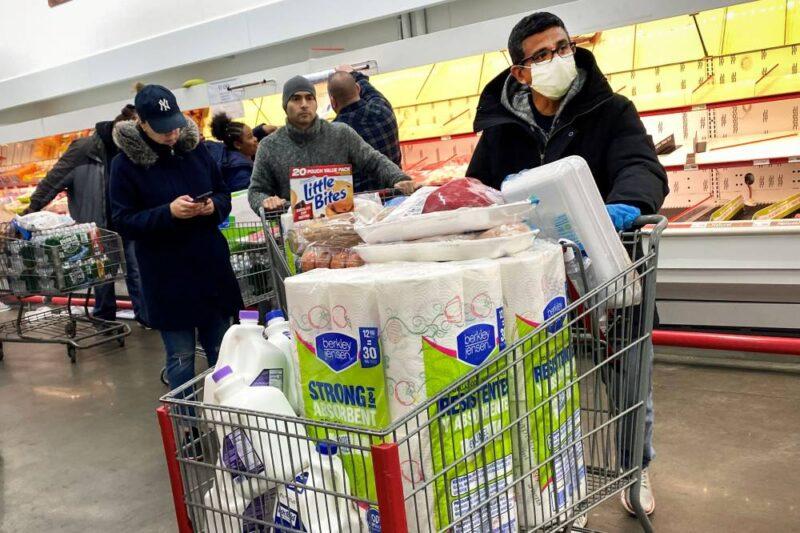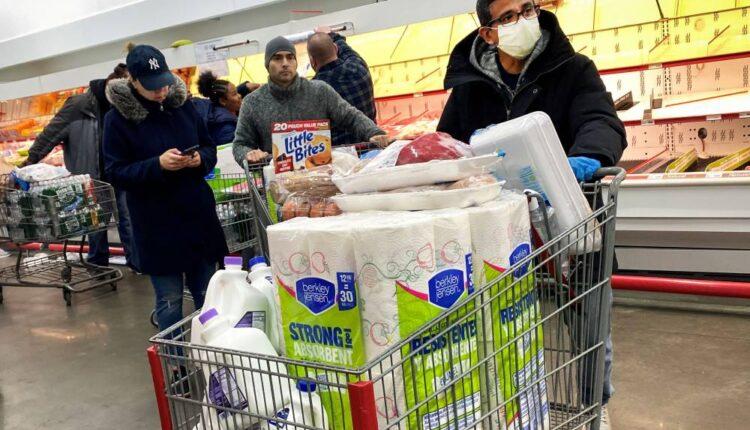
- U.S. retail sales suffered a record drop in March as mandatory business closures to control the spread of the novel coronavirus outbreak depressed demand for a range of goods.
- The outbreak set up consumer spending for its worst decline in decades.
- Retail sales plunged 8.7% in March, the biggest decline since the government started tracking the series in 1992, after falling by a revised 0.4% in February, the Commerce Department said.
VIDEO2:2402:24March retail sales drop 8.7% as coronavirus crisis hits consumer spendingSquawk Box
U.S. retail sales suffered a record drop in March as mandatory business closures to control the spread of the novel coronavirus outbreak depressed demand for a range of goods, setting up consumer spending for its worst decline in decades.
The Commerce Department on Wednesday said retail sales plunged 8.7% in March, the biggest decline since the government started tracking the series in 1992, after falling by a revised 0.4% in February.
According to a Reuters survey of economists, retail sales were forecast to have fallen 8.0% last month.
The report came as millions of Americans are thrown out of work, and strengthen economists' conviction that the economy is in deep recession. States and local governments have issued "stay-at-home" or "shelter-in-place" orders affecting more than 90% of Americans to curb the spread of COVID-19, the respiratory illness caused by the virus, and abruptly stopping the country.
"The economy is almost in free fall," said Sung Won Sohn, a business economics professor at Loyola Marymount University in Los Angeles. "We will see the bottom when the coronavirus infection rates stabilize. It's going to be a pretty deep bottom from which to come up."
The drag on sales in most retail categories from social restrictions far outweighed a surge in receipts at online retailers like Amazon, and grocery stores and pharmacies as consumers stocked up on household essentials such as food, toilet paper, cleaning supplies and medication.
Consumer spending accounts for more than two-thirds of U.S. economic activity. It grew at a 1.8% pace in the fourth quarter, with the overall economy expanding at a 2.1% rate over that period. Economists see no respite for consumer spending in the second quarter, with estimates as low as a 41% rate of decline, despite a historic $2.3 trillion fiscal package, which made provisions for cash payments to some families and boosted unemployment benefit checks.
"In general consumer spending is going to look about as bad as it has ever been, although there will be some categories of resilience," Tim Quinlan, a senior economist at Wells Fargo Securities in Charlotte, North Carolina. "The panic buying at grocery stores cannot offset the retrenchment in spending that we will see in other categories."
Economists believe the economy entered recession in March. The National Bureau of Economic Research, the private research institute regarded as the arbiter of U.S. recessions, does not define a recession as two consecutive quarters of decline in real gross domestic product, as is the rule of thumb in many countries. Instead, it looks for a drop in activity, spread across the economy and lasting more than a few months.
VIDEO2:5902:59What investors should be doing during the pandemicInvest in You: Ready. Set. Grow.
Source: cnbc.com

